Genre: RPG Developer: Sega Ent. Publisher: Working Designs Players: 1 Released:1998
Magic Knight Rayearth’s release history is quite unique, not just for the Saturn but in the console landscape in general. It bears the odd distinction of being one of the earlier releases for the Saturn, yet at the same time, it is also the last game released for the platform in North America. How is that possible? Well, if the manual is to be believed, during the localization progress a hardware failure caused the loss of most of the source code for the game, resulting in Working Designs basically having to recreate a lion’s share of the data from scratch. By the time the company was finished, Sega decided to discontinue the console in North America. This resulted in the RPG becoming the last title to be officially released in the region. That late release date is a bit of a shame, really. While not exactly a revelation, the game might’ve been quite capable of moving a few extra Saturn units had it been released two or three years earlier, since it manages to appeal to a certain demographic that’s usually neglectfully ignored by the video game industry at large: Teenage Girls. Don’t worry though, this is a rarity for the nineties: A game for girls that’s enjoyable for veteran gamers of any gender as well!
Magic Knight Rayearth is based on the eponymous Manga and Anime series by the all-female Japanese writers collective known as Clamp and combines elements from magical girl, mecha and fantasy genres. The plot revolves around three 14-year-old high school girls – tomboyish Hikari, smart and shy Fuu, and headstrong and stern Umi. While on a field trip from school, they get magically transported from the top of Tokyo tower to the fantasy realm of Cefiro. There, a weird little man called Clef, who claims to be 745 years-old, reveals the reason for their strange abduction to the girls: Princess Emeraude (or Emerald, as she’s called in the Saturn port), the pillar of the realm, has been imprisoned and is guarded by the fallen priest Zagat. Without her praying for the wellbeing of Cefiro, monsters have started to appear in the world, threatening its existence. Princess Emerald reached out and called the three girls to the realm to become Magic Knights and save the world. To do so, they have to revive the legendary machines – gigantic mechs of enormous power. Once they’ve achieved that, they are ready to set out and free Princess Emerald. Only then will the girls be able to return home. The game sticks very closely to the plot of the early issues of the manga and the first season of the anime, even lifting a number of clips and character portraits directly from the latter.
Giant mechs aside, the story synopsis should clue you in that girls are the major audience for this kind of setting. Still, as an RPG, Magic Knight Rayearth manages to be a proper, actual game that’s never condescending or insultingly banal towards its audience, something that’s not generally typical for games aimed at that particular demographic. The gameplay mechanics are slightly on the easier side when it comes to JRPG standards, so even less experienced gamers can easily get a handle on the controls, and the progress is extremely linear. For what it’s worth, the gameplay is tight and enjoyable for newcomers and seasoned gamers alike. The linear nature works in the game’s favor, as it’s easy to slowly get used to the controls even if you’re relatively inexperienced with a gamepad. And as you come to the final areas, it’s still capable of offering a meaty challenge without any nasty difficulty spikes along the way… aside from maybe the final form of the final boss, but that’s to be expected. It is very short though – RPG veterans can easily clear the entire game over a weekend, even over a single Sunday if they want to cram things.
The primary inspiration for the gameplay of the Saturn version of Magic Knight Rayearth lies in titles such as Secret of Mana/Seiken Densetsu. As such, it’s an action/RPG rather than a turn-based one. Except for a few key moments, you are in direct control of all three girls at all times and can switch between characters at the push of a button. The overall button configuration can be changed any time in the status menu after hitting start, but the standard configuration is L and R. Enemies are always visible on the screen, so there are no surprise attacks unless the story calls for them. Each character has slightly different stats and abilities. Hikaru has a quick melee slash but only a small reach, Umi’s rapier thrusts have more range to them and are the strongest of the bunch but are decidedly slower, and Fuu can shoot targets at a distance with bow and arrow but takes the longest to attack. Each of them can also learn magic spells that are tied to a specified element of Magic. Hikaru’s element is Fire and thus the strongest attack magic, while Umi’s Water Magic is weaker but less demanding on the MP pool. Fuu’s is arguably the best of the bunch, since her wind element gives her a moderate homing attack that can target several opponents at once, a spell projecting a protective barrier over the party (which, however, also prevents you from attacking) and, most essentially, healing magic. If the standard walk is too slow for you, the party moves a tad faster when holding down a button. You also have the ability to jump, which is essential for a few areas in the game. The next line is a minor spoiler, but for those still wondering about the mechs: In the final stretch of the game, the game takes on the guise of a vertical shooter, and you get to control the girls’ machines in the final showdown.
The first 20 minutes or so would make you believe that the entire game is voiced. Sadly, this is not the case. Apparently, this was a deliberate choice made by the translation team – the Japanese version is fully voiced, while the U.S. version only retains voices in cut scenes and key moments of the game. There is generally a decent amount of dialogue throughout, and from a production perspective it seems understandable to cut down on voice acting to save time and costs, but a little more would’ve been appreciated. In the manual the developers claim that testers found it exhausting having to listen to every line every single villager issued. Given the general quality of voice acting in mid-’90s video that might be the case, but I don’t really buy that. It seems more like a cost cutting method to me. They could’ve at least given voices to the major characters consistently throughout the game. After all, the quality of the voice acting may not be marvelous, but for a fifth generation console game, it’s surprisingly decent. As usual, Working Designs snuck in a few pop culture references of their own into the work (like an out of nowhere mention of an Elvis sighting or an occurrence of the “excuuuuuuuse me, princess…” meme), but overall the quality of the writing holds up well. The three main heroines in particular are teeming with character, and some of the villains are very enjoyable as well, which probably stems from their manga roots.
On the visual side, the graphics in general are pretty and colorful. Sprites and backgrounds have a bouncy, bubble quality to them, which suits the game and its respective genre nicely. Character portraits are taken directly from the source material and thus look very nice as well, although occasionally it seems like the team was a bit sloppy when cropping some of the pictures. Occasionally, there are some plot inconsistencies, particularly concerning the girls’ outfits in portraits of cut scenes. Speaking of those, as I said before, the cut scenes were lifted directly from the anime as well, and their animation is excellent, even though the videos are a tad grainy due to video compression.
The music and sound effects are generally good, too. Some tracks are even quite enjoyable to listen to on their own. There is, however, one particular track that plays out way too repeatedly and tends to get a bit annoying after a while, so a little bit more variety would’ve been welcome. The sound quality drops notably during the animated cut scenes, where it becomes muffled and has the occasional white noise hissing in the background, which is probably another side effect of the video codec.
Incidentally, since Working Design had to rebuild much of the data itself, it also took the time to implement a few minor changes. While the Japanese version only allowed for three battery saves, the US port/recreation also has an option for saves on an expansion RAM cart. The developers also fixed a number of slowdown issues the original game had when there was a lot going on. They weren’t able to fix all the troubles in that regard though. The multilayered structure of the Ice Village of Rosen does put the system under some particularly visible stress, and there are several occurrences of stutter during animated sequences. To make up for the cut voices throughout the game, the U.S. release added a diary feature. After key events in the plot, the girls make notes in their respective diaries. These entries are fully voice-acted and can be accessed at any time. This also has the nice side effect of keeping track of the plot and what needs to be done next, which is a helpful extra feature, especially for RPG newbies. Lastly, the Japanese version had an unlockable bonus, where upon collecting all the rainbow amulets, a music mode could be unlocked. The U.S. version instead features a mode that allows you to listen to a few outtakes and line flubs from the voice acting team. It’s a fun diversion once or twice, but frankly, I’d rather had the music test, as some of the tracks are nice to listen to, but you can’t hear them outside of the game, not even from the CD player menu.
Considering that Magic Knight Rayearth was the last game to be released for the Saturn in North America, it saw only a very limited print run. As such, it is pretty rare and extremely in demand among collectors, with complete CIB releases easily asking obscene prices of $800 or more on eBay! That’s a shame, really, as this prevents more players from getting to enjoy it. Is it worth shelling out hundreds of dollars for? Certainly not! For that, the game is too short, the plot progression too linear, the setting not explored well enough and the replay value too nonexistent. I wouldn’t mind a modern re-release on another platform though! All in all, this is still a very decent, if short, action/RPG, and a game that even girls can enjoy without having to feel looked down upon.
SCORE: 7 out of 10

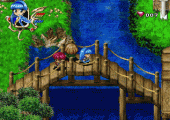
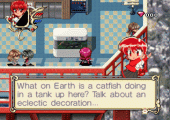
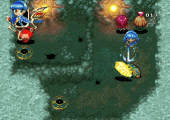
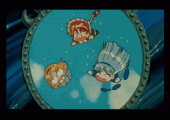
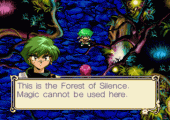
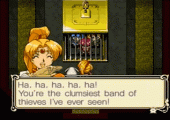
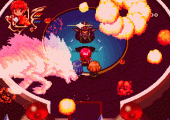
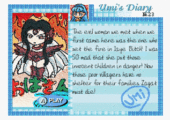
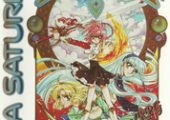
Recent Comments